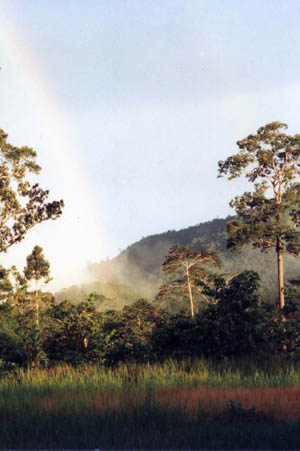The plight of Papua New Guinea's forests
06/09
 High-resolution satellite images have confirmed the "rapid deforestation" of Papua New Guinea's biodiversity rich rainforests with protected areas being felled at the same rate as unprotected areas.
High-resolution satellite images have confirmed the "rapid deforestation" of Papua New Guinea's biodiversity rich rainforests with protected areas being felled at the same rate as unprotected areas.
Although it only accounts for less than 0.5% of the Earth's land cover, the heavily forested island nation is home to an estimated 6-7% of the planet's species.
An international team of researchers estimates that the current rate of loss could result in more than half of the nation's tree cover being lost by 2021 with the main threats coming from commercial logging and burning. Existing conservation measures are failing to protect the world's third largest rainforest, the team concluded.
Scientists from the University of Papua New Guinea (PNG) and the Australian National University spent five years analysing satellite images that showed deforestation and habitat destruction between 1972 and 2002.
They estimated that in 2001 the nation's accessible forests were being cleared at a rate of 362,00 hectares a year. As PNG has the world's third largest rainforest, and was a founder member of the Rainforest Coalition - a group of tropical nations that say rich countries should pay them to protect their forests as a way of tackling climate change and protecting biodiversity - this is grim news. The study suggests many of the vulnerable trees could be removed by the time such an agreement is in place.
"Contrary to the popular opinion that little is happening, rates of change are high and accelerating," explained Dr Julian Ash of the Australian National University.
"Commercial logging operations are extracting more than 2.6% of the accessible resources yearly and causing the release of about 22 million tonnes of carbon."
The nation's forestry minister, Belden Namah, said the report was uncomfortable reading but added that he welcomed such a detailed assessment of the state of the tropical forests. "Over the past decades we have imagined that our forests are limitless," he wrote in the report's foreword.
"Perhaps the rapid modernisation that has occurred in PNG has made us reticent to accept the notions of scarcity; perhaps we have been too focused on local developments to see the bigger picture.
"If this report is the bitter pill that we need to swallow to ensure that we maintain our forests into the foreseeable future, so be it."
Papua New Guinea's government realises that protecting its forests could prove to be financially beneficial. It backs the concept of Reducing Emissions from Deforestation and Degradation (REDD), which was considered at last year's global climate summit in Bali.
Under the scheme, developing nations with large forested areas could be paid by industrialised countries not to cut down trees. The rich nations could then offset some of their own emissions against the carbon dioxide absorbed and stored by the trees that they paid to be protected from being felled. Whether protection comes from international agreements or internal commitment, time is running out. As Julian Ash explains:
"It takes centuries, not decades, for rainforests to recover from such changes."